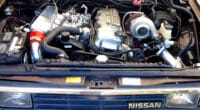The D16Z6 engine is part of Honda’s D-series family and it first saw the light of day in 1992. It remained in production until 1995 and was found in the Honda Civic and the Del Sol.
Owing to VTEC being on the intake side, this engine produced 125 hp; some D-series fans consider the D16Z6 to be a performance version of the D-series engine.
It’s usually found in Civic trim levels nestled between the lesser base models and the high-performance versions that feature the twin-cam B-series engine.
In this article, we’ll take a closer look at what makes the D16Z6 special, examine how reliable it really is, and explain how to extract more power from it.
Read on to find out whether the D16Z6 is good enough for you, or if you should look into swapping it for something else.
Honda D16Z6 Specs and Availability
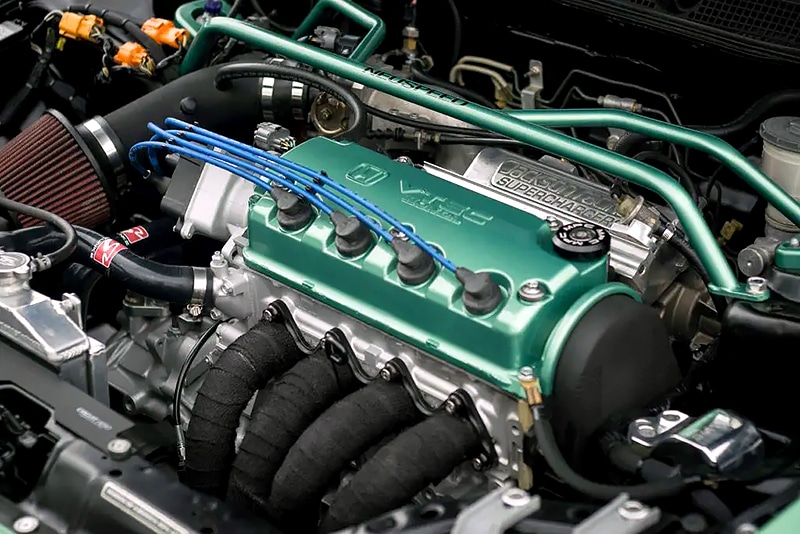
- Engine code: D16Z6
- Layout: 4-Cylinder, SOHC, 16-valve, VTEC
- Displacement: 1.6L
- Fuel system: OBD-1 PGM-FI
- Cylinder bore: 81 mm
- Piston stroke: 77.4 mm
- Compression ratio: 9.2:1
- Power: 125 hp at 6,600 rpm
- Torque: 106 lb-ft at 5,200 rpm
- Firing order: 1-3-4-2
The Honda D16Z6 was available in both the North American and European markets from the time it was released in 1992 until it was replaced in 1996.
During this time, it only appeared in two models, the Honda Civic, and its close sibling with sportier intentions, the somewhat underrated Del Sol.
The D16Z6 engine appears in the following trim levels:
- 1992–1995 EG Honda Civic Si (US)
- 1992–1995 EG Honda Civic EX, EX-V (US)
- 1992–1995 EG Honda Civic ESi (Europe)
- 1993–1995 Honda Del Sol Si (US)
- 1993–1996 Honda Del Sol ESi (Europe)
How Reliable Is the Honda D16Z6 Engine?
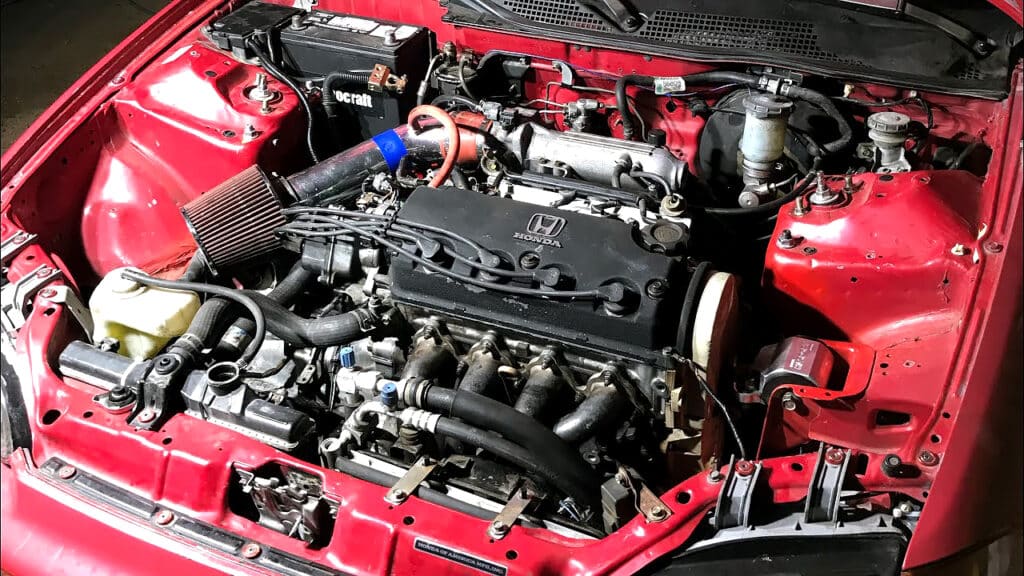
The D16Z6 motor is very reliable and offers years of trouble-free motoring. As with any engine of this age, some issues may pop up, but most of them aren’t serious.
The most common problems owners may face with the D16Z6 include various oil leaks, worn-out timing belts, and valve seal issues.
Most of these are age and maintenance-related, and can easily be avoided with regular servicing and upkeep. Unless the engine was recently rebuilt from the ground up, expect some minor issues to come up.
The aforementioned issues are the same for most of the engines in Honda’s D-series lineup, so it’s not something that’s unique to the D16Z6. If properly looked after, the Honda D16Z6 will last for years.
The reliability remains the same even when adding some performance upgrades — as long as you don’t push it too far.
A mildly tuned, naturally aspirated or turbocharged D16Z6 setup can last for many years with just regular servicing and maintenance.
However, it may be worth tearing the engine down and properly inspecting it before fitting expensive performance parts.
Tuning the Honda D16Z6 Engine
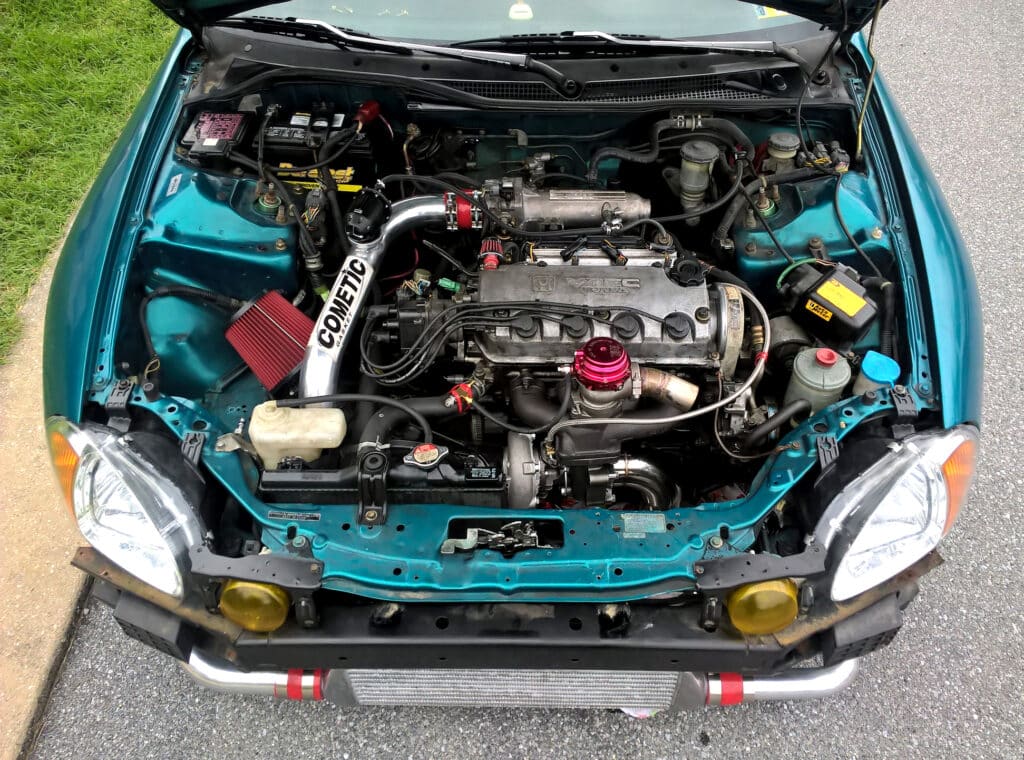
The D16Z6 engine has a higher compression ratio than some other units in the D-series family. It also features VTEC on the intake side, as well as a better intake and exhaust system than the more basic D engines like the D16Y7.
Redlining at 7,200 rpm, the D16Z6 is also one of the highest-revving D-series engines. Thanks to those features, the D16Z6 produces more power and torque than most engines in the D-series lineup.
In fact, with 125 hp and 106 lb-ft, the D16Z6 is one of the most powerful D-series units ever made.
This means the D16Z6 is one of the best Honda engines to tune from the D-series family, and it’s relatively simple and straightforward to extract some additional ponies, whether you decide to go down the naturally aspirated route or fit a turbo kit.
There are plenty of Honda D16Z6 performance parts available, both brand-new and on the used market, so tuning it can be done on a budget if necessary.
The D16Z6 crankshaft can handle around 200-220 whp before you need to look into something stronger, but with upgraded internals, these engines can deal with 400+ hp.
If your car currently has another D-series engine, and you’re considering a D16Z6 swap, look into doing a so-called Mini-Me swap instead.
Basically, it involves fitting the D16Z6 head on another D-series block, and the end result is more power and higher compression ratio.
Naturally Aspirated D16Z6 Tuning

While the Honda D16Z6 won’t produce a ton of naturally aspirated power, a few bolt-on parts and a proper tune can free up some ponies.
The power you can expect from a built D16Z6 is roughly what a stock B-series engine produces, and it makes for a reliable and fun daily driver.
Go with the basics: a high-quality cold air intake, ported exhaust manifold or headers, and a cat-back exhaust will make it breathe easier, freeing up a few hp in the process and giving it a nicer sound.
A larger throttle body, Skunk2 intake manifold, performance cam, new valve springs and retainers, an adjustable cam gear, and a proper tune will bring it to 150+ whp.
D16Z6 Forced Induction

The Honda D16Z6 engine can handle a turbo running low boost without any internal upgrades. As previously mentioned, 200-220 whp is generally regarded as the safe limit.
That being said, we’ve all seen videos of people turning the boost to the max without any other supporting upgrades — we certainly won’t recommend doing that, though.
The proper way to do a D16Z6 turbo build that produces serious power requires forged rods, Vitara pistons, ARP head bolts, and you can keep adding to that list depending on how much power you want.
A turbocharged D16Z6 can handle 400+ whp if it’s built properly, but getting there won’t be cheap.
Honda D16Z6 Conclusion
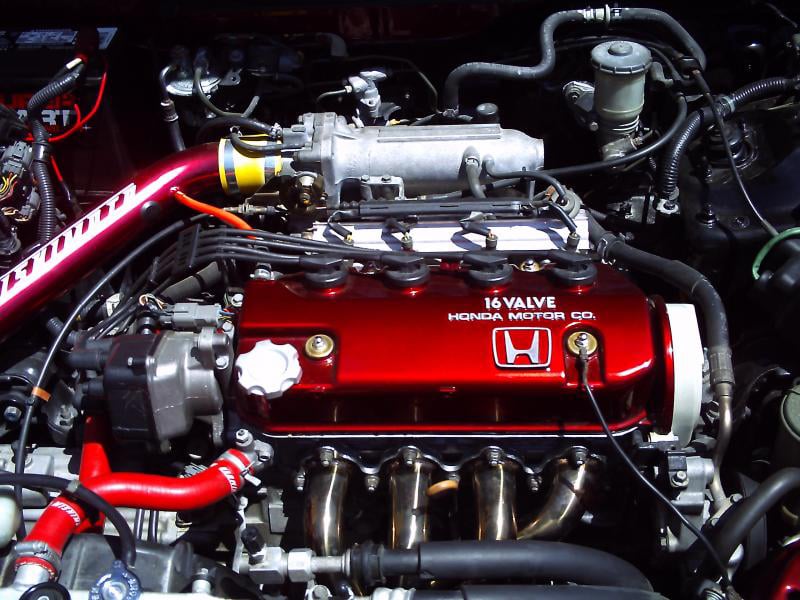
The D16Z6 is a great option if what you’re looking for is reliability and a bit of performance, and in most cases, it’s cheap to insure as well.
There’s no shortage of D16Z6 performance parts out there, but it will cost a lot of money to produce serious power.
For a fun daily driver or trackday tool, the D16Z6 will get the job done. If you’re planning something more serious, a B-series or K-series swap will be a better option.
Enjoyed this post? Share it with your friends on Reddit and Facebook! We appreciate your support.
Feature image: 1994 Honda Civic del Sol in Samba Green, by Mr.choppers, CC BY-SA 3.0

